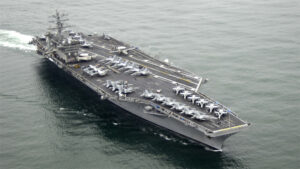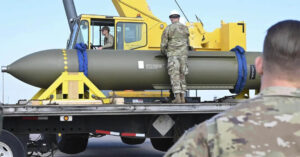Everyone grab your favorite road trip snack and pick out some good tunes, because today we’re talking about the increasingly important I-35 corridor.
Since mountainous terrain restricts rail transport through Mexico and the Jones Act makes water transport expensive and complicated, I-35 acts as a key US-Mexico trade route. This runs from Mexico City, through Texas (hitting lots of the big cities along the way), then up through Kansas City, and even connecting to other regions from there.
With Mexico’s growing role in North American trade, the I-35 corridor has become one of the most significant trade arteries in the US. While investments in rail infrastructure and reforms to the Jones Act would make transport between the US and Mexico more efficient, the I-35 and its trucks will continue to play a major role until that happens.
Here at Zeihan on Geopolitics, our chosen charity partner is MedShare. They provide emergency medical services to communities in need, with a very heavy emphasis on locations facing acute crises. Medshare operates right in the thick of it, so we can be sure that every cent of our donation is not simply going directly to where help is needed most, but our donations serve as a force multiplier for a system already in existence.
For those who would like to donate directly to MedShare or to learn more about their efforts, you can click this link.
Transcript
Hey everybody. Peter Zeihan here, coming to you from Austin’s hiking bike trail around Ladybird Lake, or Town Lake for those of you who haven’t been here in a while. Today, we’re going to talk about the Interstate 35 corridor, which I would argue is the most important transport corridor in the United States. The issue is one of geography.
It’s not so much that the U.S. and Mexico are each other’s largest trading partners; it’s how you connect the two. Mexico is a very, very rugged area, so doing large-scale rail transport isn’t really economically viable. If you have a one-quarter of one degree increase in the slope of your rail line, you can only handle about half the cargo, and the spine of Mexico, basically the northern middle half, is all mountainous. Most of the population, within Mexico City for instance, lives over a mile and a half above sea level. So, getting the sort of rail capacity you’d find in the American Great Plains or Midwest just isn’t possible in Mexico. That leaves us with truck transport.
In the United States, we have a similar constraint, but it’s due to policy rather than geography. The U.S. has the largest natural navigable waterway system in the world, but because of the Jones Act, we don’t fully use it. We’ve basically made it nearly impossible, quadrupling or more the cost of water transport by saying that anything connecting two American ports has to be on a vessel that’s American-owned, -built, -captained, and -crewed. This policy again pushes us toward using trucks.
And that’s where I-35 comes in. I-35 is basically the transport artery that begins in Mexico City, runs up to the Texas border, hits three cities in the Texas Triangle—San Antonio, Austin, and Fort Worth—and then goes up to Kansas City, with offshoots along the way toward the east and west coasts. Eventually, once you get up to Kansas City, there are also routes going north to places like Des Moines, Duluth on the Great Lakes, and further west toward the Canadian prairie provinces.
So, everything is essentially shipped by 20-foot container units, rather than by rail or water, which would be far more efficient. Until we figure out a solution for a road system that, in most places, is six lanes or less, we’re constrained on how much we can do within the North American system. The smart play would be to invest $1 trillion in rail infrastructure in Mexico and to amend the Jones Act so that the Mexicans could ship stuff to Veracruz and then up through the American waterway system. But until then, we’re stuck with this system—ergo, traffic at all hours.
Oh, and one more thing: I-35 is just around the bend of the river here. The second biggest, most important trade artery in North America is on the opposite side of the country, where Ontario meets Michigan. The Ambassador Bridge between Windsor, Ontario, and Detroit, Michigan, was until very recently the most important trade way, primarily because of the automotive trade, and it remains incredibly important today.
I’m not suggesting that it’s gotten any smaller—it hasn’t. But Mexico has overtaken it by a significant margin in the last ten years.








